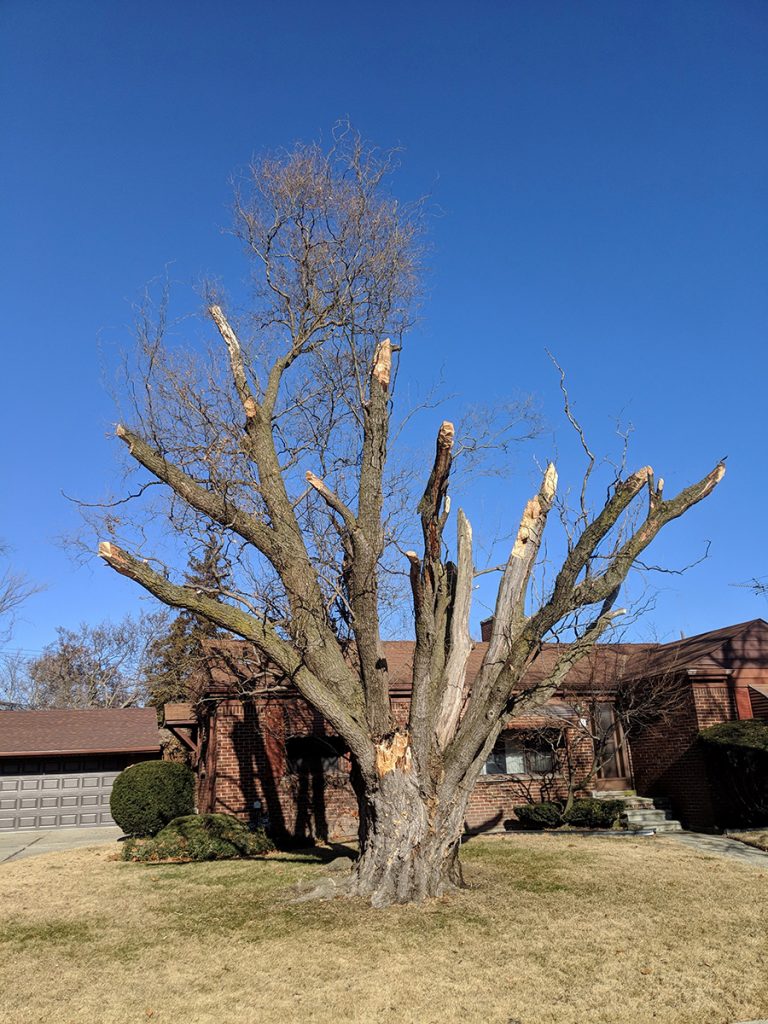Pruning to Harm Trees: a mind-rocking topic by Johan Ostberg, Ph.D.
by Gillian Martin
‘Pruning to Harm Trees’ seems like an alarming title for a training program for arborists, doesn’t it? But this was the title of a presentation by Johan Ostberg Ph.D, Professor at the Swedish Institute of Agricultural Science in the City of Malmö, Sweden. He recently stepped up to the podium at the Los Angeles/Orange County Regional Forest Council Street Tree Seminar on Trees and Infrastructure. In a clever twist on the meaning of ‘harming’ trees’ he emphasized how traditional pruning and tree management standards may sometimes be put aside to either safely allow large, old trees (otherwise designated to be felled) to be preserved as long as possible, or to convert smaller living trees into wildlife trees where there are needed to enrich biodiversity.

At the risk of sounding overly dramatic, given our historically strong aversion to preserving declining old and dead trees, he conjured the biblical image of Moses ‘parting the Red Sea!’ While I sat in the audience of about 160, I imagined volcanic eruptions in the minds of attendees. Alarm must have generated ‘Yes but…’ thoughts which leapt to challenge these unconventional concepts. It’s human nature, of course; and ‘yes buts’ have a valid place in such discussions. However, ‘yes buts,’ instead of shutting out ideas, can be keys to opening new ones. Dr. Ostberg provided several inspiring examples.
An Eu-funded project VET/cert aims to harmonize skills and knowledge about veteran tree management. By doing so, it provides training and many products to certify arborists at the practicing level as well as the consulting level. Imagine being trained to do precisely the opposite of what we have been taught! Even Dr. Ostberg admitted to me privately that he was originally very skeptical when a biologist first introduced these ideas to him. A look at this website will be well-rewarded! www.vetcert.eu.

Another program supporting veteran trees is Life Bridging the Gap. Here’s a summary straight from the website:
Veteranisation is a method to create old tree structures in younger trees and is mainly carried out using a chainsaw by arborists. The veteranisation methods aim to mimic effects on trees due to naturally occurring disturbances like storm felling, lightening, browsing animals and woodpeckers. Veteranisation will increase the number of available dead-wood habitats for threatened species, e.g. hollow trees, trees with partially dead trunks, dead trunks and sap flows. The work will be done on some of the trees that otherwise would have been cleared in restoration actions and will be carried out by arborists. The method allows gradual increases in light to the adjacent trees.

But the Swedes in the City of Malmö have taken another step, Dr. Ostberg says. They also produced an ‘Eternity Tree’ policy. It sets guidelines and designates protocols for selecting specifically qualified trees that will never be removed. These are commonly very old and large trees which have high habitat value and possibly high cultural or historic value. Here’s what this means: ‘Eternity trees’ receive extra care. More funds are set aside for them. Stabilization is done when needed, and risk assessments are provided more often. When safety must be ensured as the tree continues to decline, they are managed as needed for risk. Ultimately, when no part of a tree can/is left standing, its remains are left in place where the tree once stood. Eternity means just that.
“Urban forests provide hotspots for biodiversity and we need to consider the habitat value of our ancient trees,’ Dr. Ostberg, says. The Cavity Conservation Initiative is grateful to him for underscoring the founding principles of our mission. We wrap this up by showcasing our new partner in Michigan, arborist Jeremiah Sandler of Tree First. We are proud to feature his efforts to preserve and increase the habitat value of veteran trees. He provides oxygen for inspiration!



Connect
Connect with us on the following social media platforms.